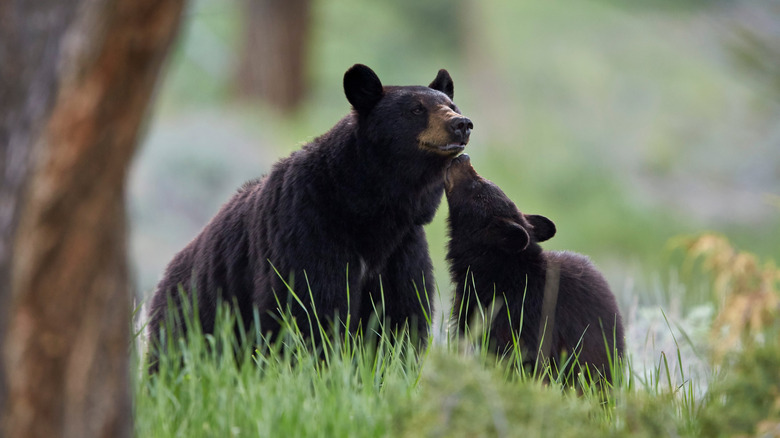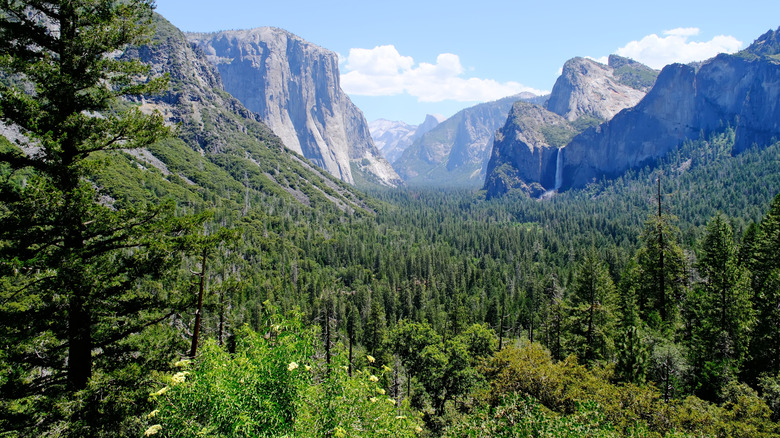The Controversial Reason These California National Parks Have Banned Bear Spray, And How To Stay Safe Instead
Hiking and backpacking veterans know the safety drill by now: Bring enough water, maybe some extra protein bars, a pack of first aid supplies, a compass, sunscreen, flashlight, and unless you're headed into certain California national parks, bear spray. That's because Yosemite, Sequoia and Kings Canyon, and Lassen Volcanic national parks have all banned the use of bear spray within their boundaries. The rationale isn't explicitly stated, but we can glean it from the California State Parks motto, "A fed bear is a dead bear." Bears continue to come into more frequent contact with humans, which puts their population at risk. They need to be protected, even if that means making visitors less safe.
Barring changes to legislation, folks heading into Yosemite National Park now have to rely on other methods to protect themselves. That doesn't mean walloping a grizzly bear with your bare hands like 6% of Americans think they can do, according to a 2021 YouGov survey. Thankfully, California grizzlies have been extinct for over 100 years, which means that would-be hikers and campers only have to worry about black bears. Black bears are far less dangerous than grizzlies — unless there are cubs around — but they're still bears.
The best way to stay safe is to keep your distance, which is as far as most bear encounters get. But if a bear gets close, grab your kids, stay calm, talk to let the bear know you're human, slowly wave your arms and move away, and if push comes to shove, then yes: Throw up your fists and start swinging.
Staying safe without bear spray in California state parks
As it stands, California's no bear spray rule is limited to those national parks where you're far more likely to see a bear than other places: Yosemite, Sequoia and Kings, and Lassen Volcanic national parks, as previously mentioned. In all instances, bear spray is now classified as a type of non-firearm weapon along the lines of increasingly off-the-wall items like blowguns, slingshots, spears, and — just to cover everything else — "any other implements designed to discharge missiles," as Yosemite National Park puts it. Like it or not, this means that there's even greater animal danger to worry about besides hybrid pig-boars marauding across California's wilder places, which, yes, is a thing.
While we covered some of the basics that everyone should know to stay safe in the event of a bear encounter (black bear, remember), like staying calm, slowly moving away, talking, etc., a deeper understanding of black bear behavior might help shed light on the no bear spray rule. In short, bears don't really want anything to do with people except for our food. Leaving behind trash is bad enough, because bears become reliant on humans for food, but handing food to bears is even worse.
Bears that grow dependent on humans can get aggressive if they don't get what they want, which is precisely what's led to increasingly dangerous bear encounters in recent years. Then, the bears have to be euthanized. Hence the, "A fed bear is a dead bear" motto. Also, if bear spray — which is basically capsaicin-based pepper spray — is misused, the scent can actually attract bears. Prevention is a far better strategy overall, rather than relying on bear spray for defense.

